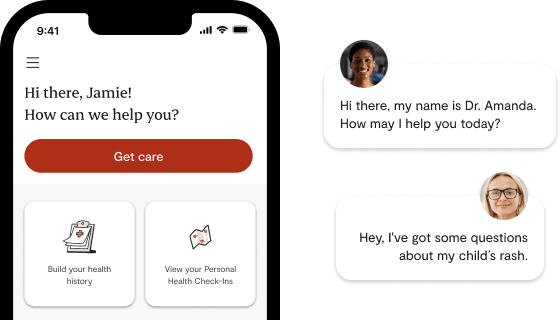Quality sleep has become one of the most pressing health challenges facing Canadians today. With nearly half of all Canadians (48%) reporting trouble sleeping and insomnia prevalence increasing by 42% since 2007, it’s clear that sleep problems have reached epidemic proportions in our country. Whether you’re tossing and turning at night, waking up groggy, or struggling to fall asleep, this comprehensive guide will provide you with science-based strategies to transform your sleep quality and help you wake up refreshed every morning.
Sleep isn’t just about feeling rested—it’s a cornerstone of your physical health, mental well-being, and overall quality of life. Poor sleep has been linked to serious health conditions including cardiovascular disease, diabetes, obesity, and depression. The good news? With the right knowledge and techniques, you can significantly improve your sleep quality starting tonight.
Understanding Sleep: Why Quality Matters More Than Quantity
While most adults need 7-9 hours of sleep per night, sleep quality is equally important as quantity. Research shows that 77% of Canadian adults aged 18-64 meet sleep duration recommendations, yet many still report poor sleep quality. Understanding your sleep cycles and what affects them is the first step toward better rest.
Your body follows a natural circadian rhythm—an internal biological clock that regulates when you feel alert and when you feel sleepy. This rhythm is influenced by light exposure, temperature, and daily activities. When your circadian rhythm is disrupted, it can lead to difficulty falling asleep, staying asleep, or feeling refreshed upon waking.
The Canadian Sleep Crisis: By the Numbers
Recent Canadian research reveals alarming trends in our national sleep health:
-
16.3% of Canadians suffer from clinical insomnia disorder
-
Women are 24% more likely to experience insomnia than men
-
Indigenous peoples face 77% higher rates of sleep disorders
-
Sleep apnea affects 3-5% of Canadian adults, with rates increasing with age
-
Insomnia symptoms increased 42% between 2007 and 2015
These statistics underscore the urgent need for effective sleep improvement strategies tailored to Canadian lifestyles and challenges.
Core Sleep Hygiene Principles: Your Foundation for Better Sleep
1. Maintain a Consistent Sleep Schedule
Your body thrives on routine. Going to bed and waking up at the same time every day—including weekends—helps regulate your internal clock. This consistency makes it easier to fall asleep and wake up naturally over time.
Action Steps:
-
Choose a bedtime that allows for 7-9 hours of sleep
-
Set a consistent wake-up time, even on days off
-
Avoid “sleeping in” more than 1 hour on weekends to prevent social jet lag
2. Create the Perfect Sleep Environment
Your bedroom should be a sanctuary designed specifically for sleep. Research consistently shows that environmental factors significantly impact sleep quality.
Optimal Bedroom Conditions:
-
Temperature: Keep your room between 15.5-19°C (60-67°F). Research shows this range promotes the deepest, most restorative sleep
-
Darkness: Use blackout curtains or eye masks to block all light sources
-
Quiet: Minimize noise with earplugs, white noise machines, or fans
-
Comfortable bedding: Invest in a supportive mattress and breathable bedding materials
3. Develop a Pre-Sleep Routine
A consistent bedtime routine signals to your brain that it’s time to wind down. Start your routine 30-60 minutes before your intended sleep time.
Effective Pre-Sleep Activities:
-
Dim the lights throughout your home
-
Take a warm bath or shower to lower body temperature
-
Practice gentle stretching or yoga
-
Read a book (preferably not on a screen)
-
Listen to calming music or nature sounds
-
Practice meditation or deep breathing exercises
Light Exposure: The Science of Better Sleep
Light exposure is one of the most powerful tools for regulating your sleep-wake cycle. Understanding how to use light strategically can dramatically improve your sleep quality.
Morning Light Exposure
Getting bright light exposure within the first hour of waking helps anchor your circadian rhythm and makes it easier to fall asleep at night. A 2024 study found that daytime bright light exposure improved sleep quality and duration significantly.
Practical Strategies:
-
Step outside for 10-15 minutes within an hour of waking
-
Open curtains and blinds immediately upon waking
-
Consider a light therapy lamp if you wake up before sunrise (common in Canadian winters)
-
Eat breakfast near a bright window when possible
Evening Light Management
Reducing light exposure in the evening, especially blue light from electronic devices, is crucial for melatonin production—your body’s natural sleep hormone.
Blue Light Reduction Tips:
-
Turn off electronic devices 1-2 hours before bedtime
-
Use blue light blocking glasses if you must use devices
-
Enable “night mode” on smartphones and computers
-
Replace bright overhead lights with dim, warm lighting in the evening
-
Use red or amber night lights for bathroom visits
Nutrition and Sleep: What to Eat and When
Your diet plays a significant role in sleep quality. Certain foods and eating patterns can either promote or disrupt your sleep.
Sleep-Promoting Foods
Recent research has identified several foods that naturally support better sleep:
-
Tart cherry juice: Contains natural melatonin and may increase sleep duration by up to 85 minutes
-
Kiwi fruit: Rich in serotonin and antioxidants that promote sleep
-
Fatty fish: High in vitamin D and omega-3 fatty acids that regulate serotonin
-
Walnuts: Contain melatonin and healthy fats
-
Complex carbohydrates: Whole grains consumed 3-4 hours before bed can increase tryptophan availability
Timing Your Meals
Best Practices:
-
Finish your last large meal 3-4 hours before bedtime
-
If hungry before bed, choose a light snack with protein and healthy carbs
-
Stay hydrated during the day but reduce fluid intake 2-3 hours before sleep
-
Limit caffeine after 2 PM (caffeine can stay in your system 6-8 hours)
-
Avoid alcohol close to bedtime as it disrupts sleep quality
Exercise and Sleep: The Optimal Connection
Regular physical activity is one of the most effective ways to improve sleep quality. A 2025 meta-analysis of 86 studies involving 7,276 participants found that exercise significantly improves sleep quality across all age groups.
Best Types of Exercise for Sleep
Research shows that different types of exercise offer varying benefits for sleep:
-
Pilates (most effective): 91.7% efficacy rating
-
Aerobic exercise: 69.7% efficacy rating
-
Combined aerobic and resistance training: 59.4% efficacy rating
-
Resistance training: 58.6% efficacy rating
-
Traditional Chinese sports (Tai Chi): 40.5% efficacy rating
-
Yoga: 30.1% efficacy rating
Exercise Timing and Intensity
Optimal Exercise Schedule:
-
Best time: Morning or early afternoon exercise provides the greatest sleep benefits
-
Avoid late-night workouts: Finish intense exercise at least 4 hours before bedtime
-
Optimal weekly amount: 920 MET-minutes per week (roughly 150 minutes of moderate exercise)
-
Consistency matters: Regular exercise is more beneficial than occasional intense sessions
Natural Sleep Aids: Science-Based Supplements
While lifestyle changes should be your first approach, certain natural supplements have strong scientific support for improving sleep quality.
Top Evidence-Based Sleep Supplements
Melatonin
-
Dosage: 0.5-3mg taken 1-2 hours before bedtime
-
Benefits: Helps regulate circadian rhythm, reduces time to fall asleep
-
Best for: Shift workers, jet lag, or those with delayed sleep phase
Magnesium
-
Dosage: 200-400mg before bed
-
Benefits: Relaxes muscles, activates parasympathetic nervous system
-
Best for: Those with restless legs or muscle tension
Valerian Root
-
Dosage: 300-600mg taken 2 hours before bed
-
Benefits: May improve sleep quality and reduce time to fall asleep
-
Best for: Those who have trouble staying asleep
L-Theanine
-
Dosage: 100-200mg before bed
-
Benefits: Promotes relaxation without drowsiness
-
Best for: Racing thoughts or anxiety at bedtime
Important Note: Always consult with a healthcare provider before starting any supplement regimen, especially if you take other medications.
Technology and Sleep: 2025 Trends
The sleep technology landscape is rapidly evolving, with new innovations making it easier to track and improve sleep quality.
Sleep Tracking Devices
Top-Rated Options for 2025:
-
Oura Ring 4: Most accurate overall sleep tracking with comprehensive health metrics
-
WHOOP 4.0: Best for athletes and active individuals
-
Apple Watch Series 10: Excellent for iPhone users, now includes sleep apnea detection
-
Samsung Galaxy Watch Ultra: Superior choice for Android users with Samsung phones
Sleep Apps Worth Downloading
Evidence-Based Apps:
-
Sleep Cycle: Smart alarm that wakes you during light sleep phases
-
Headspace: Meditation and sleep stories for racing minds
-
Calm: Extensive library of sleep sounds and bedtime stories
-
CBT-I Coach: Cognitive behavioral therapy techniques for insomnia
Smart Home Sleep Optimization
Emerging Technologies:
-
Smart mattresses: AI-powered beds that adjust firmness and temperature automatically
-
Circadian lighting: Light bulbs that automatically adjust color temperature throughout the day
-
Climate control: Smart thermostats that optimize bedroom temperature for sleep phases
-
Sound masking: Advanced white noise systems that adapt to environmental noise
Managing Stress and Anxiety for Better Sleep
Sleep anxiety affects nearly 40% of young adults and is a growing concern across all age groups. Addressing mental and emotional factors is crucial for sustainable sleep improvement.
Cognitive Behavioral Techniques
Effective Strategies:
-
Progressive muscle relaxation: Systematically tense and release muscle groups
-
4-7-8 breathing: Inhale for 4, hold for 7, exhale for 8 counts
-
Mindfulness meditation: Focus on present-moment awareness
-
Visualization: Imagine peaceful, relaxing scenes
Sleep Worry Management
If You Can’t Fall Asleep:
-
Don’t watch the clock—it increases anxiety
-
Get out of bed after 20 minutes and do a quiet activity
-
Practice the “cognitive shuffle”—think of random, unconnected items
-
Write down worries to address tomorrow
-
Use the “paradoxical intention” technique—try to stay awake instead of forcing sleep
Breathing Exercises for Better Sleep
Recent research has highlighted the powerful impact of controlled breathing on sleep quality. Breathing exercises activate the parasympathetic nervous system, promoting relaxation and making it easier to fall asleep.
Evidence-Based Breathing Techniques
Diaphragmatic Breathing:
-
Place one hand on chest, one on belly
-
Breathe in slowly through nose, expanding belly
-
Exhale slowly through mouth, contracting belly
-
Practice for 10-15 minutes before bed
Box Breathing:
-
Inhale for 4 counts
-
Hold for 4 counts
-
Exhale for 4 counts
-
Hold empty for 4 counts
-
Repeat 4-8 cycles
Resonance Breathing:
-
Breathe at a rate of 5 breaths per minute (6 seconds in, 6 seconds out)
-
This matches your natural heart rate variability rhythm
-
Practice for 10-20 minutes before sleep
Special Considerations for Canadian Sleepers
Seasonal Affective Patterns
Canadian winters present unique sleep challenges due to limited daylight exposure. Many Canadians experience:
-
Delayed sleep phase during winter months
-
Increased melatonin production from lack of sunlight
-
Higher rates of seasonal affective disorder (SAD)
Winter Sleep Strategies:
-
Use light therapy lamps in the morning (10,000 lux for 30 minutes)
-
Maintain consistent sleep schedules despite changing daylight
-
Consider vitamin D supplementation (consult your doctor)
-
Maximize natural light exposure when available
Shift Work and Sleep
With approximately 15% of Canadians working non-standard hours, shift work sleep disorder is a common challenge.
Shift Worker Sleep Tips:
-
Use blackout curtains and eye masks for daytime sleep
-
Maintain consistent sleep schedules on days off when possible
-
Consider strategic caffeine use (avoid 6 hours before intended sleep)
-
Communicate with family about sleep schedule needs
Common Sleep Disorders: When to Seek Help
While lifestyle changes can significantly improve sleep for most people, some conditions require professional medical attention.
Warning Signs to Watch For
Consult a healthcare provider if you experience:
-
Loud, persistent snoring with breathing pauses (possible sleep apnea)
-
Excessive daytime sleepiness despite adequate sleep time
-
Difficulty staying asleep more than 3 times per week for over a month
-
Restless legs or periodic limb movements during sleep
-
Sleepwalking or other unusual sleep behaviors
-
Persistent insomnia lasting more than 3 months
Sleep Apnea in Canada
Sleep apnea affects 3% of Canadian adults overall, rising to 5% among those over 45. This condition involves repeated breathing interruptions during sleep and significantly increases the risk of:
-
Cardiovascular disease (2.2x higher mortality risk)
-
Type 2 diabetes (2.5x higher risk)
-
Stroke and heart attack
-
Depression and cognitive decline
Frequently Asked Questions About Sleep
How much sleep do I really need?
Most adults need 7-9 hours of sleep per night, but individual needs vary. Pay attention to how you feel with different amounts of sleep. If you wake up refreshed and maintain energy throughout the day, you’re likely getting enough sleep. Age also matters:
-
Young adults (18-25): 7-9 hours
-
Adults (26-64): 7-9 hours
-
Older adults (65+): 7-8 hours
Why do I wake up tired even after 8 hours of sleep?
Waking up tired despite adequate sleep time usually indicates poor sleep quality rather than insufficient quantity. Common causes include:
-
Sleep apnea or other breathing disorders
-
Frequent sleep interruptions
-
Poor sleep environment (too hot, noisy, or bright)
-
Alcohol consumption before bed
-
Irregular sleep schedule
-
Underlying health conditions
Is it normal to wake up during the night?
Yes, brief awakenings during the night are completely normal. Most people experience 10-20 micro-awakenings per night without remembering them. However, if you’re fully alert for 20+ minutes or wake up multiple times per night feeling distressed, this may indicate a sleep disorder requiring attention.
Should I nap during the day?
Short naps (15-20 minutes) can be beneficial for alertness and performance, especially if you didn’t sleep well the night before. However, long naps (over 30 minutes) or naps late in the day can interfere with nighttime sleep. If you must nap, do so before 3 PM and keep it brief.
Can I catch up on sleep over the weekend?
While you can partially recover from short-term sleep debt, consistently relying on “catch-up sleep” isn’t ideal. Irregular sleep schedules can disrupt your circadian rhythm, leading to “social jet lag.” It’s better to maintain consistent sleep and wake times throughout the week.
What’s the best sleeping position?
The best sleeping position varies by individual, but research suggests:
-
Back sleeping: Good for spine alignment, may worsen sleep apnea
-
Side sleeping: Recommended for pregnant women and those with sleep apnea
-
Stomach sleeping: May strain neck and spine, generally not recommended
Choose the position that feels most comfortable and doesn’t cause pain or discomfort.
How does age affect sleep?
Sleep patterns change naturally with age:
-
Sleep becomes lighter: More easily disrupted by noise or movement
-
Earlier bedtime and wake time: Circadian rhythm shifts earlier
-
More frequent awakenings: Normal part of aging process
-
Less deep sleep: REM and deep sleep stages decrease
-
Medication effects: Some medications can impact sleep quality
When should I stop drinking caffeine?
Caffeine has a half-life of 5-6 hours, meaning half the caffeine you consume is still in your system hours later. To avoid sleep interference, stop consuming caffeine at least 8 hours before bedtime. For most people, this means no caffeine after 2 PM.
Are sleep medications safe for long-term use?
Most sleep medications are intended for short-term use only. Long-term use can lead to dependence, tolerance, and rebound insomnia. Before considering sleep medications, try the lifestyle changes outlined in this guide. If you still struggle with sleep, consult a healthcare provider about cognitive behavioral therapy for insomnia (CBT-I), which is often more effective long-term than medication.
How can I sleep better during Canadian winters?
Canadian winters present unique challenges due to limited daylight and cold temperatures:
-
Use a light therapy lamp in the morning to maintain circadian rhythm
-
Keep your bedroom cool but ensure you’re warm enough under blankets
-
Maintain consistent sleep schedules despite changing daylight hours
-
Consider vitamin D supplementation to combat seasonal effects
-
Use heavy curtains to create darkness when needed for sleep
Creating Your Personal Sleep Action Plan
Improving your sleep is a process that requires patience and consistency. Start with these steps:
Week 1-2: Foundation Building
-
Establish consistent sleep and wake times
-
Optimize your sleep environment (temperature, darkness, quiet)
-
Begin a 30-minute pre-sleep routine
-
Remove electronic devices from the bedroom
Week 3-4: Lifestyle Integration
-
Add morning light exposure to your routine
-
Adjust meal timing and content
-
Incorporate regular exercise (but not close to bedtime)
-
Practice one breathing or relaxation technique nightly
Week 5-8: Fine-Tuning
-
Monitor your progress and adjust strategies as needed
-
Consider natural sleep aids if still struggling
-
Address any remaining environmental or lifestyle factors
-
Track sleep patterns to identify what works best for you
Ongoing: Maintenance and Adaptation
-
Continue successful strategies consistently
-
Adjust seasonally for Canadian weather changes
-
Stay informed about new sleep research and techniques
-
Don’t hesitate to seek professional help if problems persist
Conclusion: Your Journey to Better Sleep Starts Tonight
Better sleep isn’t a luxury—it’s a necessity for optimal health, productivity, and quality of life. With nearly half of Canadians struggling with sleep issues, you’re not alone in this challenge. However, by implementing the evidence-based strategies outlined in this guide, you can significantly improve your sleep quality and wake up feeling refreshed and energized.
Remember that sustainable sleep improvement takes time. Start with the fundamentals—consistent sleep schedule, optimized sleep environment, and good sleep hygiene—then gradually incorporate additional strategies that work for your lifestyle. Be patient with yourself and recognize that small, consistent changes often yield the most dramatic long-term results.
The science is clear: quality sleep is one of the most powerful tools you have for improving your physical health, mental well-being, and overall life satisfaction. Every night offers a new opportunity to practice these techniques and move closer to the restful, restorative sleep your body and mind deserve.
Sweet dreams, and here’s to better sleep for all Canadians!








